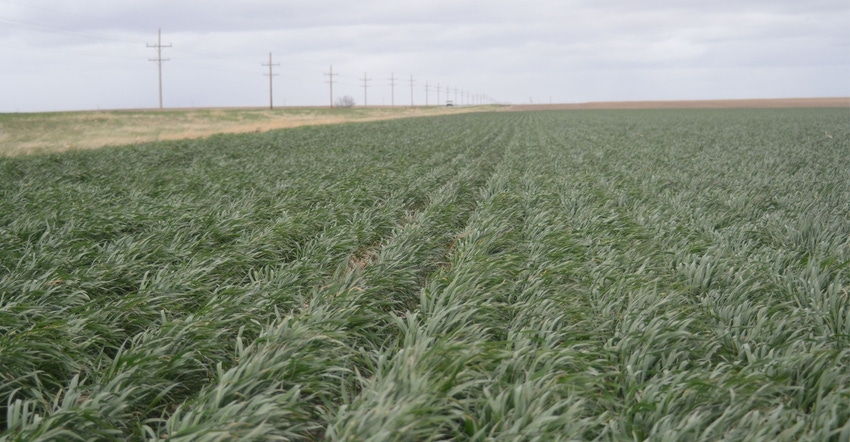September 7, 2017

Hessian flies are considered an economic pest in the fall because they can cause significant damage that can stunt or kill plants.
With more farmers gaining interest in using cover crops, there are questions about possible pests that may develop when introducing new plants on the farm. You need to consider these insect-related issues when planting crops in the fall, says Erin Hodgson, Iowa State University Extension entomologist.
Hessian fly is a potentially destructive pest in winter wheat. However, cultural control can minimize the potential damage and economic loss, she says. Hodgson offers the following information and management suggestions.
Life cycle: 2 generations per year in Iowa
The Hessian fly has two generations per year in Iowa, says Hodgson. Adults emerge as volunteer spring wheat and early-seeded winter wheat start to grow. Females lay about 300 eggs in four days. Although wheat is the preferred host plant, they will also deposit eggs in barley and rye. The eggs are reddish and very small, usually laid end to end in small groups on the upper leaf surface.
Larvae (maggots) prefer to feed within the grooves of the wheat leaf sheath and stem until they pupate before harvest. Hessian flies spend the summer as pupae in wheat stubble, and the second generation emerges in the fall to feed on emerging winter wheat. They overwinter as resting pupae, often referred to as "flaxseeds."
Watch for injury symptoms on wheat
Larvae of Hessian fly cause injury to wheat by feeding on leaves, tillers and stems. Hessian flies are considered an economic pest in the fall because they can cause significant damage that can stunt or kill plants. As seed heads begin to fill, heavily infested plants can lodge. High humidity is needed for a significant infestation to develop.
What can you do to manage this pest?
Evaluating Hessian fly activity and severity is the first step to understanding future management. Discouraging females from laying eggs in wheat is an important cultural control strategy. Start scouting for larvae and flaxseeds in mid-September and October. Check areas of the field with poor stands or stunted plants and examine the base of the plant (first and second nodes) by pulling the leaf sheath away from the stem. Foliar insecticides will not make contact with larvae inside the plant, but follow these guidelines to protect yield:
• Destroy volunteer wheat, especially during wet years, to minimize the available favorable host plants. Mated females will have difficulty finding suitable hosts for their eggs and further reduce the overwintering population if all the volunteer wheat is removed.
• Plant a resistant wheat variety to discourage females from depositing eggs. Typically, resistant wheat varieties provide sufficient protection against the Hessian fly and growers do not have to adjust planting dates.
• Plant after the fly-free date to reduce risk of Hessian fly infestations Adults are short-lived, and so planting after recommended historical dates can improve the overwintering stand conditions. Planting after the fly-free date will not always prevent Hessian fly infestations, but it will lower the risk. Mild fall and winter temperatures have reduced the effectiveness of the fly-free date in the U.S., because some adults can still be active until frost begins.
It should be noted that planting too late may prevent good plant establishment. Very late-planted wheat will be attractive to egg-laying females the following spring.
• If a cover crop is established this fall primarily for minimizing soil erosion, select a planting date best suited for good root establishment, rather than based on the fly-free date. Also, consider planting a non-host cover crop, like oats, to discourage females from laying eggs.
• Practice crop rotation, because adults are weak flyers and they have a limited host range.
Hessian fly is a relatively rare pest in Iowa because small grains are not abundantly grown. Although a historical fly-free date has been established, it is based on studies from almost 90 years ago. It provides a planting guideline for those farmers planting small grains on a regular basis and who have experienced Hessian fly damage. This strategy is more effective when implemented on a large scale. Also, take into consideration the cooler spring and summer temperatures with the development of most insects; the fly-free date might actually be seven to 10 days behind the estimations on the map.
Source: Iowa State University
You May Also Like




